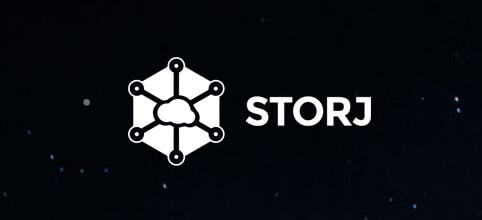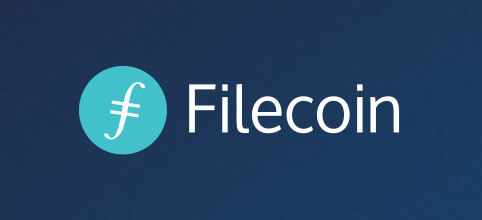Cover art/illustration via CryptoSlate. Image includes combined content which may include AI-generated content.
Cloud storage is nothing new. For years now, it’s been possible for consumers to forego the traditional local storage options afforded by external hard drives, and to instead subscribe to a third-party service that allows them to upload and download their files to remote servers run by companies such as Google, Apple, Dropbox and Amazon, to name a few.
The remote option offers certain advantages over physical storage – accessibility from multiple devices and no reliance on hardware (which can be destroyed or stolen). Typically, the models are also a lot more flexible – an individual can simply pay for more storage if required, as opposed to shelling out for a multi-terabyte device from the get go. However, this does come at the cost of trusting a third party with your potentially sensitive data.
In the age of blockchain revolution, where even banana plantations have their own token, there was undoubtedly going to be some form of disruption to the data storage industry.
A number of projects have endeavoured to harness the power of decentralisation to rival the services provided by dedicated servers, creating a market for people to ‘rent out’ the unused space on their devices (think Golem, but for storage). Below are some of the most popular.
Storj
“Storj is a protocol that creates a distributed network for the formation and execution of storage contracts between peers. The Storj protocol enables peers on the network to negotiate contracts, transfer data, verify the integrity and availability of remote data, retrieve data, and pay other nodes.”

Storj (pronounced ‘storage’) is a decentralised and censor-proof storage platform. From a security standpoint, it blows traditional cloud storage out of the water – when a user wishes to upload a file, it is encrypted client-side, before being split into pieces (a process referred to as ‘sharding’).
The shards are distributed across the network’s nodes and into the available storage offered by ‘farmers’ (those renting their drives).
The system relies on a form of proof known as ‘proof-of-retrievability’ for auditing purposes – using cryptographic proofs (I won’t elaborate on these too much, but this paper and the whitepaper explain the idea in technical terms), the farmers can prove to the user that their shards haven’t been tampered with, and are indeed being stored.
Storj has built up an impressive user base since its creation (originally issuing a Counterparty token under the name SCJX, it has since migrated to the ERC-20-based STORJ). At the time of its Town Hall in late November 2017, it boasted 13 petabytes of data stored by 35,000 farmers. The architecture of the network has certainly facilitated a distributed storage solution, but calling the platform truly decentralised is a point of contention amongst many.
The bridges connecting the various nodes occasionally face downtime, which prevents transfer of data between participants (it’s worth noting that this affects only the service, and not the network itself). Payouts to farmers are not automated via any smart-contract magic, but are calculated by the team on a monthly basis using an algorithm.
Storj is better thought of as a business akin to Uber or AirBnb – instead of Storj Labs owning data centres, it enables users to monetise an otherwise unused resource, and is able to undercut the traditional market for data storage (it is cheaper than both Amazon and Microsoft’s offerings).
Sia
“Sia combines a peer-to-peer network with blockchain technology to create the world’s first decentralized storage platform.”
Sia, launched in 2015 by Nebulous, Inc., is a blockchain storage solution which, on the surface, is similar to Storj. Under the hood, however, the two have some major differences.
Sia operates on its own blockchain, and is touted in the whitepaper as being a ‘Bitcoin derivative’. There is no cap on the maximum amount of Siacoins – users can mine these indefinitely (although the block rewards do decrease over time). In this regard, Sia is perhaps more decentralised than its competitors.
The lack of centralisation has given rise to a storage market, where hosts can compete to offer lower pricing. The protocol makes extensive use of smart contracts to govern interactions between nodes. Payment-wise, the Sia model is not dissimilar to the Lightning Network – the renter places funds in what is called an ‘incremental contract’ (this is really just a payment channel), with two outputs: the renter and the host.

Initially, the contract will stipulate that the funds are to be returned to the renter. However, as uploads and downloads take place, it can be updated to reflect how much should be paid out to the host if they store the files as expected. In shifting the settlements off-chain, Sia reduces blockchain bloat to achieve better scalability.
Like Storj, Sia makes use of erasure coding to mitigate the risk of nodes going offline or data disappearing.
The contracts between host and renter also require periodic proof on the former’s behalf that they are storing the files, to be completed within a set timeframe. If they fail to provide this, they risk penalties that endanger their funds.
Sia’s network stats can be viewed here. It should be noted that its architecture makes it slower than Storj, and requires that users deposit collateral if operating as hosts.
Filecoin
“The Filecoin network achieves staggering economies of scale by allowing anyone worldwide to participate as storage providers. It also makes storage resemble a commodity or utility by decoupling hard-drive space from additional services.”
The team behind Filecoin is none other than Protocol Labs, creators of IPFS. Unlike the other two projects, Filecoin is not operational as of yet, although its ERC-20 token has already been distributed in ICO (the allocation of tokens has seen some significant criticism).

Filecoin is closer in design to Sia than Storj, in that contracts are stored on the blockchain. Filecoin’s market is set to automatically pair up a renter with a host.
There is a shift away from Proof-of-Work to Proof-of-Replication, where hosts are able to demonstrate to a renter that they have cloned the uploaded files to physical storage (the whitepaper claims this will reduce the ease of performing Sybil attacks), and Proof-of-Spacetime, to verify that the host is storing the data. Blocks are mined in such a way that incentivises miners to amass as much storage as possible (which grants them more mining power).
It is hard to comment on the efficiency of the Filecoin ecosystem at present, as there is little more than the whitepaper to go on.
Conclusion
The three projects discussed are by no means the only ones being developed (MaidSafe’s vision extends beyond simple storage, and is also worth taking a look at).
With data storage being such a huge industry, there’s plenty of space for multiple teams to work on different models that suit different users’ needs (allowing them to weigh up factors such as decentralisation/speed/price).
Data storage is a market ripe for disruption. With vapourware polluting most other areas in the cryptospace, it is refreshing to see two already-deployed projects which have undercut traditional cloud storage by relying on user resources, with more to follow.





































































































